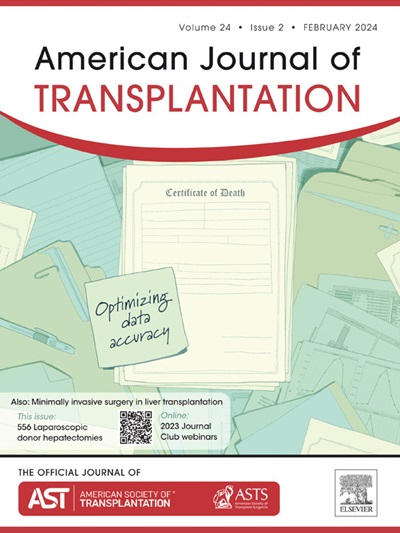Domino partial heart transplantation
IF 8.9
2区 医学
Q1 SURGERY
引用次数: 0
Abstract
Heart valve replacement in pediatric cardiothoracic surgery poses problems because conventional heart valve implants do not have the ability to grow. This mandates serial reoperations for implant exchanges until an adult-size implant can fit. Partial heart transplantation eliminates these reoperations because the transplanted valves grow. However, partial heart transplantation competes with heart transplantation for a limited supply of donor hearts. This is a critical barrier to the progress of the field. Domino partial heart transplantation is a new surgical technique that overcomes this barrier by capitalizing cardiectomy hearts from heart transplant recipients for partial heart transplantation. This surgical technique has the potential to transform pediatric heart valve replacement by greatly expanding the cardiac donor pool, increasing the time available for matching donors with recipients and simplifying the logistics of donation. As a result, the number of domino partial heart transplants is expected to exceed the number of partial heart transplants from deceased donors.
多米诺部分心脏移植。
儿童心胸外科的心脏瓣膜置换术存在问题,因为传统的心脏瓣膜植入物不能生长。这就要求对植入物置换进行连续的手术,直到适合成人大小的植入物。部分心脏移植可以避免再手术,因为移植的瓣膜会生长。然而,部分心脏移植与心脏移植竞争有限的供体心脏供应。这是该领域取得进展的一个关键障碍。多米诺部分心脏移植是一种新的外科技术,它克服了这一障碍,利用心脏移植受者的心脏切除术进行部分心脏移植。这种外科技术有可能通过极大地扩大心脏供体池,增加供体与受体匹配的时间和简化捐赠的后勤工作来改变儿科心脏瓣膜置换术。因此,多米诺骨牌部分心脏移植的数量预计将超过已故捐赠者的部分心脏移植数量。
本文章由计算机程序翻译,如有差异,请以英文原文为准。
求助全文
约1分钟内获得全文
求助全文
来源期刊
CiteScore
18.70
自引率
4.50%
发文量
346
审稿时长
26 days
期刊介绍:
The American Journal of Transplantation is a leading journal in the field of transplantation. It serves as a forum for debate and reassessment, an agent of change, and a major platform for promoting understanding, improving results, and advancing science. Published monthly, it provides an essential resource for researchers and clinicians worldwide.
The journal publishes original articles, case reports, invited reviews, letters to the editor, critical reviews, news features, consensus documents, and guidelines over 12 issues a year. It covers all major subject areas in transplantation, including thoracic (heart, lung), abdominal (kidney, liver, pancreas, islets), tissue and stem cell transplantation, organ and tissue donation and preservation, tissue injury, repair, inflammation, and aging, histocompatibility, drugs and pharmacology, graft survival, and prevention of graft dysfunction and failure. It also explores ethical and social issues in the field.

 求助内容:
求助内容: 应助结果提醒方式:
应助结果提醒方式:


